Defending Your Home Against Theft - Strategies and Tips
In today's world, the safety of our homes is more important than ever. With the rising rates of theft and burglary, it's crucial to take proactive measures to protect your sanctuary. This article explores effective strategies and practical tips to safeguard your home from theft, enhancing security measures, and fostering a sense of safety for you and your family. Whether you live in a bustling city or a quiet suburb, understanding the risks and implementing the right defenses can make a significant difference in keeping your property secure.
Identifying potential threats is crucial for effective home security. Burglars often target homes that appear easy to break into, making awareness paramount. Common burglary tactics include:
- Scouting neighborhoods for signs of unoccupied homes.
- Exploiting weak entry points like unlocked doors or windows.
- Using social engineering to gather information about homeowners' schedules.
By being aware of these tactics, you can take steps to mitigate risks and enhance your home's defenses.
Investing in a reliable home security system can deter intruders. A well-designed security system acts as a formidable barrier against theft, providing peace of mind for homeowners. Various types of systems are available, each with unique features that contribute to your overall safety. From basic alarms to advanced smart systems, understanding what’s out there is key to making an informed choice.
Alarm systems are a vital component of home security. They serve as the first line of defense against unauthorized entry. Different types of alarms can alert you and authorities during a break-in, ensuring a swift response. For instance, some systems offer:
- Audible alarms that scare off intruders.
- Silent alarms that notify authorities without alerting the intruder.
- Smart alarms that integrate with your smartphone for real-time alerts.
Understanding the difference between monitored and unmonitored alarm systems helps homeowners choose the right option for their needs and budget. Monitored systems are constantly overseen by a security company, ensuring immediate response in case of an emergency. Unmonitored systems, while often more affordable, rely on the homeowner to react to alerts.
Smart alarms offer advanced features like mobile alerts and integration with smart home devices, providing enhanced security and convenience for homeowners. Imagine being able to check your security status from your phone while on vacation—this level of control can significantly reduce anxiety about your home’s safety.
Surveillance cameras are essential for monitoring your property. They act as both a deterrent and a means of documenting any suspicious activity. When choosing cameras, consider factors such as:
- Resolution and clarity of footage.
- Placement for optimal coverage.
- Recording capabilities and storage options.
Having recorded footage can be invaluable for law enforcement and insurance claims in the unfortunate event of a theft.
Beyond technology, physical security measures play a significant role in home defense. Simple changes can dramatically enhance the physical security of your home. For instance, investing in high-quality locks and deadbolts is essential. Not all locks are created equal; some are more resistant to picking and tampering than others. Make sure to choose locks that meet industry standards for security.
High-quality locks and deadbolts are fundamental to home security. Consider the following when selecting locks:
- Look for locks with a Grade 1 rating.
- Choose deadbolts with a minimum of one-inch throw.
- Consider smart locks that offer keyless entry and remote access.
Proper outdoor lighting can deter thieves by eliminating dark areas around your home. Well-lit exteriors not only enhance visibility but also make it harder for intruders to approach unnoticed. Consider installing motion-sensor lights and ensuring all entry points are adequately illuminated.
Community involvement is essential for crime prevention. Establishing a neighborhood watch program fosters communication among residents and creates a united front against crime. When neighbors look out for one another, it significantly enhances security.
Strong relationships with neighbors can enhance security. When you know the people living around you, it’s easier to spot unusual behavior. Organize block parties or regular meet-ups to strengthen these ties and create a supportive community that looks out for one another.
Encouraging residents to report suspicious activities strengthens neighborhood security. A vigilant community is a safer community. Make it a point to communicate regularly with your neighbors about any concerns or unusual occurrences, creating an environment of trust and cooperation.
Understanding insurance and legal aspects is crucial for homeowners. Protecting your assets goes beyond physical security measures; it also involves having adequate home insurance. Ensure your policy covers theft and other potential risks.
Homeowners insurance can provide financial protection in case of theft. When choosing a policy, consider coverage limits, deductibles, and what is typically covered. It’s wise to review your policy regularly to ensure it meets your current needs.
Homeowners have specific legal rights and responsibilities regarding property protection. Familiarize yourself with self-defense laws and property rights to understand what actions you can legally take to protect your home and family.
Being prepared for emergencies is vital for home safety. Creating an emergency plan ensures that your family knows what to do in the event of a theft or break-in. This plan should outline specific actions, such as who to call and where to meet after an incident.
An effective emergency plan outlines actions to take during a theft or break-in. Make sure every family member is aware of the plan and practices it regularly. This preparedness can make a significant difference in a high-stress situation.
Having essential supplies ready can make a difference during emergencies. Consider maintaining a kit that includes:
- Flashlights and batteries.
- First aid supplies.
- Important documents in a secure location.
Conducting regular security audits helps identify vulnerabilities in your home. Take the time to evaluate your home’s security measures and make necessary improvements. This proactive approach can be the key to preventing theft.
Evaluating all entry points is crucial for security. Check doors, windows, and other access areas for potential weaknesses. Strengthening these points can significantly reduce the likelihood of a break-in.
Security measures should evolve with changing threats. Regularly updating and upgrading your home security systems and practices ensures you stay one step ahead of potential intruders. Don't wait for an incident to take action—be proactive!
Q: What are the most effective home security measures?
A: A combination of a reliable security system, strong locks, outdoor lighting, and community vigilance are the most effective measures.
Q: How can I improve my home’s physical security?
A: Invest in high-quality locks, install deadbolts, and ensure your property is well-lit to deter intruders.
Q: What should I do if I notice suspicious activity in my neighborhood?
A: Report it to local authorities and communicate with your neighbors to keep everyone informed.

Understanding the Risks
When it comes to safeguarding your home, understanding the risks is the first step in developing a robust security strategy. It’s not just about locking your doors and hoping for the best; you need to be aware of the potential threats lurking around your neighborhood. Burglars often have a method to their madness, and knowing their tactics can be your best defense.
Common burglary tactics include:
- Targeting Vulnerabilities: Thieves often scout homes for weak points, like open windows or poorly lit areas, before making their move.
- Disguising as Delivery Personnel: Some intruders dress as delivery workers to gain access to homes, allowing them to survey the premises under the guise of a legitimate reason.
- Using Social Engineering: Burglars may manipulate homeowners into revealing information about their security systems or schedules.
Awareness is key! By being vigilant and recognizing these tactics, you can take proactive steps to prevent theft. For instance, consider your neighborhood’s layout. Are there areas that are too dark at night? Are there bushes or trees that could provide cover for a thief? By identifying these potential risks, you can take action to illuminate those dark spots or trim back overgrown vegetation.
Moreover, having a conversation with your neighbors about unusual activities can help create a community that looks out for one another. When everyone is on the same page, it becomes much harder for thieves to operate unnoticed. Remember, the goal is not to live in fear but to foster a sense of awareness and readiness.
Ultimately, understanding the risks is about more than just knowing what to look for; it’s about creating an environment that discourages crime. This means being proactive, investing in security measures, and engaging with your community. By doing so, you not only protect your home but also contribute to a safer neighborhood for everyone.

Home Security Systems
When it comes to protecting your home, investing in a reliable home security system is one of the best decisions you can make. Not only do these systems act as a deterrent to potential intruders, but they also provide peace of mind, knowing that your loved ones and belongings are safeguarded. With a myriad of options available, it can feel overwhelming to choose the right system. However, understanding the different types of systems and their features can simplify the decision-making process.
Home security systems generally fall into two main categories: monitored systems and unmonitored systems. Monitored systems are connected to a professional monitoring service that alerts the authorities in case of an emergency. On the other hand, unmonitored systems rely on loud alarms to scare off intruders and notify homeowners. While both types have their advantages, the choice ultimately depends on your specific needs and budget.
One of the most popular components of a home security system is the alarm system. These alarms can be triggered by unauthorized entry, and many modern systems come equipped with advanced features. For instance, some alarms can send instant notifications to your smartphone, allowing you to monitor your home remotely. This level of connectivity is invaluable, especially for those who travel frequently or have a busy lifestyle.
Alarm systems are a vital component of home security. They are designed to alert you and the authorities during a break-in. There are several types of alarm systems available, including:
- Intrusion alarms: These detect unauthorized entry through doors or windows.
- Glass break sensors: These trigger an alarm when they detect the sound of breaking glass.
- Motion detectors: These sense movement in designated areas and can be used both indoors and outdoors.
Each of these systems serves a specific purpose and can be integrated into a comprehensive security setup.
Understanding the difference between monitored and unmonitored alarm systems is essential for homeowners. Monitored alarms, as mentioned earlier, connect to a professional monitoring service. This means that if an alarm goes off, the monitoring center will contact you and dispatch emergency services if necessary. On the flip side, unmonitored alarms will sound off, but it’s up to you or a neighbor to take action. While unmonitored systems are often cheaper, they may not provide the same level of security as their monitored counterparts.
In today's digital age, smart technology has revolutionized home security. Smart alarms come with features like mobile alerts, which notify you of any suspicious activity while you’re away. Moreover, many smart alarms can integrate with other smart home devices, allowing you to control your entire security system from your smartphone or tablet. This means you can arm or disarm your system, view live camera feeds, and receive alerts—all at your fingertips.
Another crucial aspect of home security systems is surveillance cameras. These devices allow you to monitor your property in real-time and provide valuable evidence in case of a theft. Modern surveillance cameras come with features like high-definition video, night vision, and motion detection. When placing these cameras, consider strategic locations such as:
- Entrances and exits
- Driveways
- Backyards
- Common areas
By ensuring that your cameras cover all critical areas, you can significantly enhance your home’s security.
In conclusion, investing in a comprehensive home security system is a proactive step toward protecting your home and loved ones. By understanding the various components, such as alarm systems and surveillance cameras, you can create a customized security plan that fits your needs. Remember, the best defense is a good offense, and being prepared is the key to ensuring your safety.
1. What is the average cost of a home security system?
The cost can vary widely depending on the type of system and features you choose. Basic systems can start around $200, while comprehensive setups can exceed $1,000.
2. Do I need a professional installation for my security system?
While many systems offer DIY installation, professional installation can ensure that your system is set up correctly and optimally.
3. How often should I update my security system?
It's advisable to review and update your security measures at least once a year or whenever you make significant changes to your home.
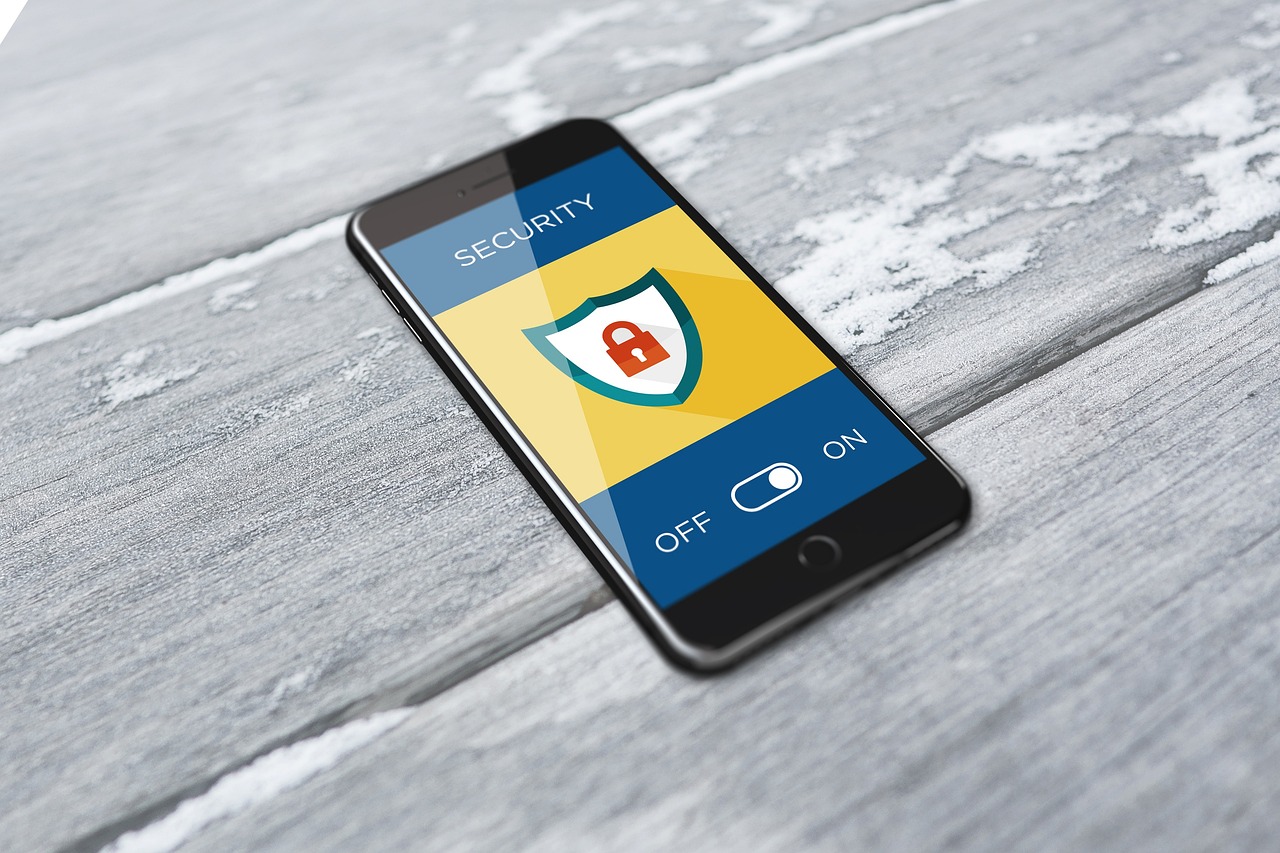
Alarm Systems
When it comes to safeguarding your home, are a crucial line of defense. These systems serve as the first alert to any unauthorized entry, acting as both a deterrent and a notification mechanism. Imagine a loud siren blaring at the slightest hint of a break-in—this is the kind of peace of mind that a reliable alarm system can provide. Not only do they alert you and your family, but they also notify local authorities, ensuring that help is on the way if needed.
There are various types of alarm systems available, each designed to meet different needs and preferences. For instance, some homeowners may prefer a simple setup that includes basic door and window sensors, while others might opt for a more comprehensive system that integrates motion detectors, glass break sensors, and even environmental monitoring for smoke or carbon monoxide. The choice ultimately depends on your specific security requirements and budget.
One of the most significant advantages of modern alarm systems is their ability to offer remote monitoring. With today’s technology, many systems can be connected to your smartphone, allowing you to monitor your home from anywhere in the world. Imagine being on vacation and receiving a notification that someone has entered your home; you could immediately check your surveillance cameras and alert the authorities if necessary. This level of control and awareness is invaluable in today’s fast-paced world.
Furthermore, alarm systems can be categorized into two main types: monitored and unmonitored. Monitored systems are connected to a central monitoring station that keeps an eye on your home 24/7. If an alarm is triggered, the monitoring service will contact you and dispatch emergency services if needed. On the other hand, unmonitored systems rely on loud alarms to scare off intruders, but they do not notify authorities automatically. Understanding the differences between these two options can help you make an informed decision based on your lifestyle and security needs.
To give you a clearer picture, here's a quick comparison:
| Feature | Monitored Systems | Unmonitored Systems |
|---|---|---|
| 24/7 Monitoring | Yes | No |
| Immediate Response | Yes | No |
| Cost | Higher (monthly fees) | Lower (one-time purchase) |
| Control via App | Often Available | Limited |
In addition to traditional alarm systems, many homeowners are now turning to smart alarm features. These advanced systems can integrate with other smart home devices, such as smart locks and cameras, creating a comprehensive security network. With features like mobile alerts, you can receive instant notifications on your smartphone whenever there’s unusual activity detected in or around your home. This blend of convenience and security is what makes smart alarm systems increasingly popular among tech-savvy homeowners.
In summary, alarm systems are not just a luxury; they are becoming a necessity for homeowners looking to enhance their security. By understanding the different types available and their features, you can choose a system that best fits your lifestyle and provides the peace of mind you deserve. Whether you go for a monitored system that offers constant vigilance or a smart alarm that keeps you connected, investing in an alarm system is a proactive step towards protecting your home and loved ones.
- What is the best type of alarm system for my home? The best type of alarm system depends on your specific needs, budget, and the layout of your home. Consider whether you want a monitored or unmonitored system, and explore smart features if you’re tech-savvy.
- How much does a home alarm system cost? Prices can vary widely based on the type of system, features, and installation costs. Basic systems may start around $200, while comprehensive monitored systems can range from $500 to over $2,000.
- Can I install an alarm system myself? Many modern alarm systems are designed for DIY installation, but if you prefer a professional setup, most companies offer installation services for an additional fee.
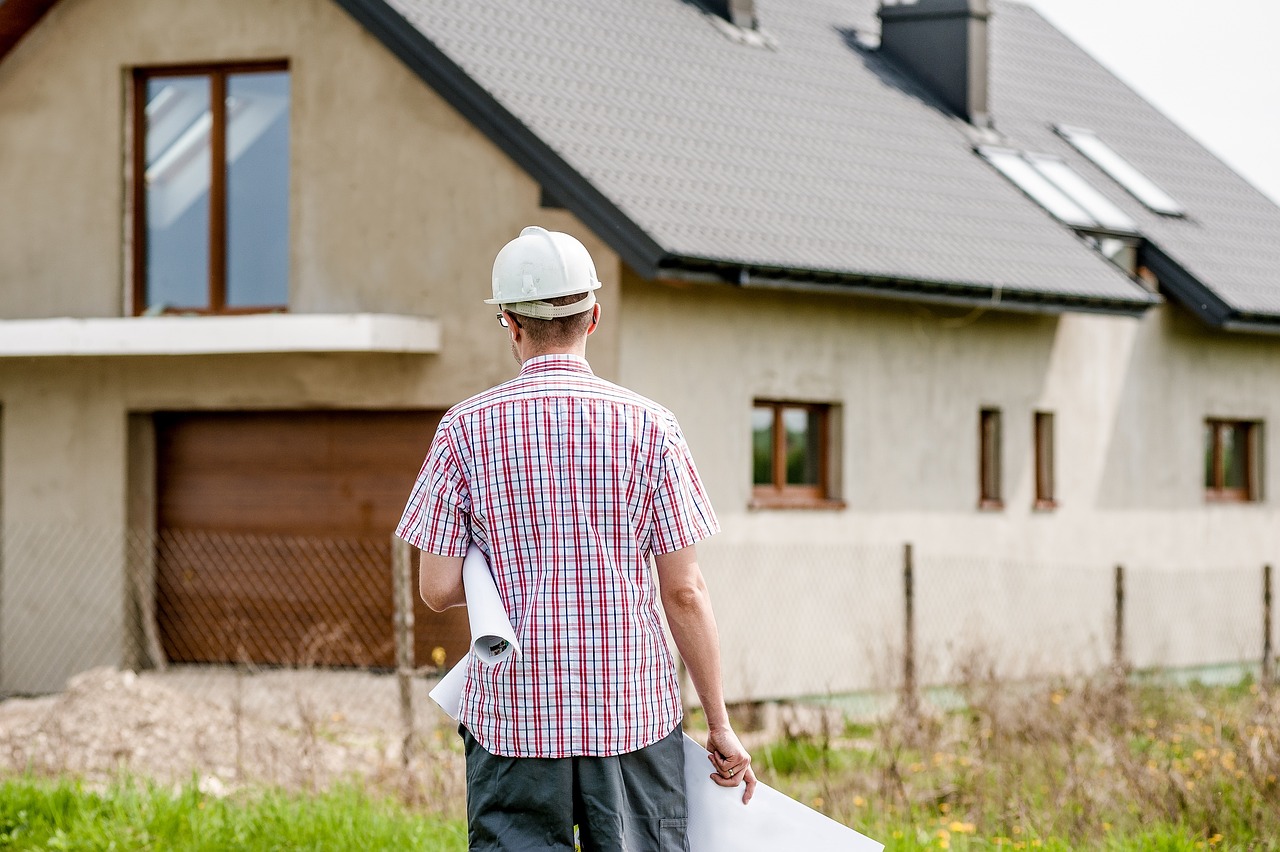
Monitored vs. Unmonitored Alarms
When it comes to securing your home, one of the most critical decisions you'll face is choosing between monitored and unmonitored alarms. Each option has its own set of advantages and disadvantages, and understanding these can help you make an informed choice that best fits your lifestyle and security needs.
A monitored alarm system is connected to a professional monitoring service that keeps an eye on your property 24/7. This means that if your alarm goes off, the monitoring center is immediately notified and can take action, such as contacting the authorities on your behalf. This added layer of security can be a significant advantage, especially if you're not home when an incident occurs. Imagine being on vacation and receiving an alert that your alarm has been triggered; the peace of mind that comes from knowing that professionals are responding to the situation is invaluable.
On the other hand, unmonitored alarms operate independently, alerting you and your family through loud sirens or notifications to your phone, but they do not have a direct line to emergency services. While these systems can still deter potential intruders simply by their presence, they rely heavily on you or your neighbors to react in case of an emergency. This can sometimes lead to delays in response times, which can be critical in a burglary situation.
To help you weigh your options, here’s a quick comparison:
| Feature | Monitored Alarms | Unmonitored Alarms |
|---|---|---|
| 24/7 Monitoring | Yes | No |
| Immediate Police Response | Yes | No |
| Cost | Higher (monthly fees) | Lower (no monthly fees) |
| Peace of Mind | High | Moderate |
Ultimately, the choice between monitored and unmonitored alarms boils down to your personal preferences and circumstances. If you travel frequently or have a busy lifestyle, a monitored system may be worth the investment. Conversely, if you are on a tight budget or prefer a more hands-on approach to security, an unmonitored system can still provide a solid defense against potential threats.
As you consider your options, it's essential to think about your home environment and how often you are away. The right alarm system can significantly enhance your home security, giving you and your family the safety and assurance you deserve.
- What is the main difference between monitored and unmonitored alarms?
The main difference lies in the monitoring service. Monitored alarms are connected to a professional service that alerts authorities during a break-in, while unmonitored alarms only alert you or your family.
- Are monitored alarms more expensive?
Yes, monitored alarms typically involve monthly fees for the monitoring service, whereas unmonitored alarms do not have ongoing costs.
- Can I switch from unmonitored to monitored alarms later?
Absolutely! Many homeowners start with unmonitored systems and later upgrade to monitored services as their needs change.

Smart Alarm Features
When it comes to safeguarding your home, smart alarm systems are revolutionizing the way we think about security. Unlike traditional alarms, smart alarms come packed with advanced features that not only provide peace of mind but also enhance your overall safety. Imagine being able to monitor your home from anywhere in the world, receiving instant alerts on your smartphone, and even integrating your alarm system with other smart devices in your home. Sounds appealing, right?
One of the standout features of smart alarm systems is the ability to receive real-time notifications. Whether you’re at work, on vacation, or simply out running errands, these systems can send alerts directly to your mobile device if any suspicious activity is detected. This immediate feedback allows you to respond quickly, potentially preventing a break-in before it escalates. Additionally, many systems now offer video verification, which enables you to see what's happening in real-time through your security cameras, providing an extra layer of confidence.
Another exciting aspect of smart alarms is their integration with home automation systems. Imagine walking into your home, and as you unlock the door, your lights turn on, and your thermostat adjusts to your preferred temperature—all thanks to your smart alarm system. This level of integration not only enhances your convenience but also creates an environment that feels secure and welcoming. Furthermore, many smart alarms can be controlled remotely via an app, allowing you to arm or disarm your system, check camera feeds, and even manage other connected devices with just a few taps on your smartphone.
Additionally, smart alarm systems often come with geofencing capabilities. This feature allows your system to automatically arm or disarm itself based on your location. For instance, when you leave your home, the system can engage itself, and when you return, it can disarm as you approach. This not only saves you the hassle of remembering to set your alarm but also ensures your home is always protected when you’re away.
Moreover, many smart alarms are equipped with smart sensors that can detect more than just unauthorized entry. These sensors can monitor environmental factors such as smoke, carbon monoxide, and even water leaks, alerting you to potential dangers before they become serious issues. This multi-functional capability makes smart alarms a comprehensive solution for home safety.
To summarize, smart alarm features bring a new level of sophistication to home security. With real-time notifications, home automation integration, geofencing, and advanced sensors, these systems not only protect your home but also enhance your lifestyle. Investing in a smart alarm system is not just about preventing theft; it’s about creating a secure and smart living environment for you and your loved ones.
- What is a smart alarm system? Smart alarm systems are advanced security systems that can be monitored and controlled remotely via a smartphone or other smart devices.
- How do smart alarm systems integrate with other devices? They can connect with various smart home devices, such as lights and thermostats, allowing for automated responses based on your routines.
- Are smart alarms easy to install? Many smart alarm systems are designed for easy DIY installation, with user-friendly instructions and apps to guide you through the setup process.
- Do smart alarms require a subscription? Some features, like cloud storage for video footage or 24/7 monitoring, may require a subscription, while basic functionalities often do not.
- Can I use a smart alarm system without a Wi-Fi connection? Most smart alarms require a stable internet connection to function optimally, but some may have local storage options or work with cellular networks.

Surveillance Cameras
When it comes to securing your home, are like having a watchful eye that never blinks. These devices not only help you monitor your property but also act as a significant deterrent to potential intruders. Imagine a thief hesitating to break in because they know they’re being watched—this is the power of surveillance cameras. They come in various types, each designed to meet different needs and preferences. From traditional wired cameras to sleek, wireless options, the market offers a plethora of choices to fit any home security strategy.
One of the first things to consider when installing surveillance cameras is their placement. You want to cover all critical areas, such as entry points like doors and windows, as well as larger spaces like your backyard. A well-placed camera can capture crucial footage that could be invaluable in the event of a break-in. For example, placing cameras at strategic angles can help you get a clear view of anyone approaching your home. Additionally, consider using cameras with night vision capabilities to ensure your property is monitored even in low-light conditions.
Furthermore, many modern surveillance cameras come equipped with advanced features that enhance their functionality. Some of these features include:
- Motion Detection: Alerts you when movement is detected, allowing for immediate action.
- Two-Way Audio: Lets you communicate through the camera, providing an extra layer of interaction.
- Cloud Storage: Safeguards footage by storing it off-site, ensuring access even if the camera is tampered with.
In terms of technology, integrating your surveillance system with a smartphone app can provide you with real-time alerts and the ability to view live footage from anywhere. This level of accessibility not only enhances your peace of mind but also allows you to keep an eye on your home while you're away. It's like having a virtual security guard at your disposal!
Ultimately, investing in surveillance cameras is not just about protecting your home; it’s about creating a sense of security for you and your family. The sight of a camera can be enough to make a potential burglar think twice. Plus, having recorded footage can assist law enforcement in their investigations, making it a win-win situation. So, if you haven't already considered adding surveillance cameras to your home security arsenal, now might be the perfect time to do so.
Q: What type of surveillance camera is best for home use?
A: The best type of surveillance camera depends on your specific needs. For most homeowners, a combination of indoor and outdoor cameras with night vision and motion detection features is ideal.
Q: Can I view my surveillance camera footage remotely?
A: Yes, many modern surveillance systems offer smartphone apps that allow you to view live footage and receive alerts directly on your device.
Q: How much does it cost to install surveillance cameras?
A: The cost can vary widely based on the type of cameras, installation fees, and additional features. On average, a basic system can range from a few hundred to several thousand dollars.

Physical Security Measures
When it comes to defending your home against theft, are your first line of defense. While technology has its perks, nothing beats the solid feel of a well-secured door or the glow of a well-lit yard. Think of your home as a fortress; the stronger your walls and gates, the less likely an intruder will dare to enter. In this section, we’ll explore practical steps you can take to enhance the physical security of your home, making it less appealing to potential thieves.
One of the most important aspects of physical security is the quality of your locks and deadbolts. Investing in high-quality locks is non-negotiable. Cheap locks can be picked or broken with little effort, leaving your home vulnerable. Consider options like smart locks that offer keyless entry and can be controlled via your smartphone. But remember, even the best locks are only as good as their installation. Ensure that all locks are installed correctly and are appropriate for the type of door they are securing.
In addition to locks, outdoor lighting plays a crucial role in deterring criminals. A well-lit exterior can significantly reduce the chances of a break-in. Thieves prefer to operate under the cover of darkness, so illuminating areas around windows, doors, and pathways can make your home less attractive. Consider using motion-sensor lights that activate when someone approaches, catching intruders off guard. The right lighting can transform your home into a well-lit haven, making it clear that you take security seriously.
Moreover, the layout of your property can affect its security. If your home is surrounded by dense bushes or trees, it might provide perfect hiding spots for burglars. Trim back any overgrown foliage that could shield an intruder's approach. Instead, consider landscaping that enhances visibility, such as low shrubs and open spaces. The clearer your yard, the less appealing it becomes to someone looking to break in.
Another physical security measure worth considering is the installation of a security gate. If you live in a neighborhood where theft is a concern, a sturdy gate can act as a deterrent. It not only adds an extra layer of security but also signals to potential intruders that you are serious about protecting your property. If a gate isn't feasible, installing a fence can also help create a barrier that makes unauthorized entry more challenging.
Lastly, it's always a good idea to conduct a security assessment of your home. Walk around your property and evaluate your current security measures. Are there any weak points? Are your doors and windows secure? This self-assessment can reveal vulnerabilities you might not have considered. You can even invite a trusted friend or neighbor to help you spot potential security flaws. Regularly reviewing and updating your security measures is key to staying ahead of potential threats.
- What are the best types of locks to use for home security? High-quality deadbolts and smart locks are highly recommended for their strength and advanced features.
- How can I make my outdoor lighting more effective? Use motion-sensor lights and ensure all entry points are well-lit to deter intruders.
- Is it necessary to have a security gate? While not mandatory, a security gate can significantly enhance your home’s security and act as a deterrent.
- How often should I conduct a security assessment? It's advisable to perform a security assessment at least once a year or after any significant changes to your home or neighborhood.
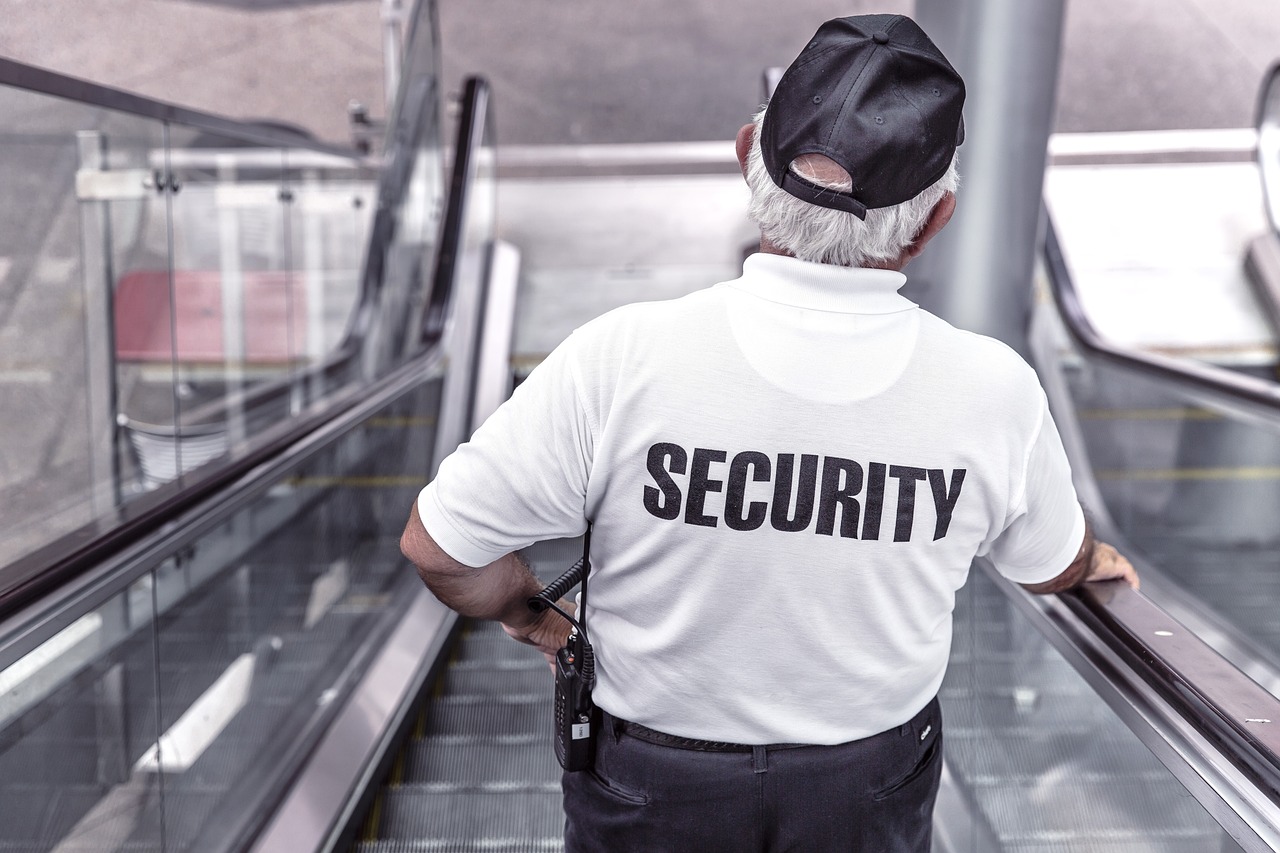
Locks and Deadbolts
When it comes to securing your home, high-quality locks and deadbolts are your first line of defense. Imagine your home as a fortress; without a strong gate, intruders can easily waltz in. So, what makes a lock effective? It's not just about having any lock; it's about investing in the right type that offers both durability and resistance against tampering. There are various types of locks available, each designed to meet different security needs.
First up, let’s talk about deadbolts. These are often considered the gold standard in home security. Unlike spring bolt locks, which can be easily manipulated, deadbolts require a key or a thumb turn to unlock. This makes them significantly more secure. You might wonder, "What’s the difference between a single and a double cylinder deadbolt?" A single cylinder deadbolt uses a key on the outside and a thumb turn on the inside, while a double cylinder deadbolt requires a key on both sides. The latter can be a good option for doors with glass panels, as it prevents an intruder from breaking the glass and unlocking the door from the inside.
Next, let’s dive into the world of smart locks. These innovative devices are revolutionizing home security. Imagine the convenience of unlocking your door with just a tap on your smartphone or using a code instead of fumbling with keys. Smart locks often come with features like remote access, activity logs, and even the ability to grant temporary access to guests. However, it's essential to choose a reputable brand and ensure your Wi-Fi network is secure to prevent hacking.
But it doesn't stop at just choosing the right locks. Proper installation is crucial. Even the best lock can be rendered useless if it’s poorly installed. You should consider hiring a professional locksmith to ensure that your locks and deadbolts are fitted correctly. Additionally, regularly inspecting your locks for wear and tear can help you catch potential issues before they become a problem. Remember, a lock that doesn’t work properly is as good as no lock at all.
In conclusion, investing in quality locks and deadbolts is an essential step in protecting your home. They not only serve as a physical barrier against intruders but also provide peace of mind for you and your family. Whether you opt for traditional deadbolts, smart locks, or a combination of both, make sure to prioritize security in your home. After all, a secure home is a happy home!
- What type of lock is best for my front door? A deadbolt is highly recommended for its strength and resistance to forced entry.
- Are smart locks safe? Yes, but ensure you choose reputable brands and maintain a secure Wi-Fi network.
- How often should I replace my locks? It's advisable to replace locks every 5-7 years or immediately if you lose your keys.
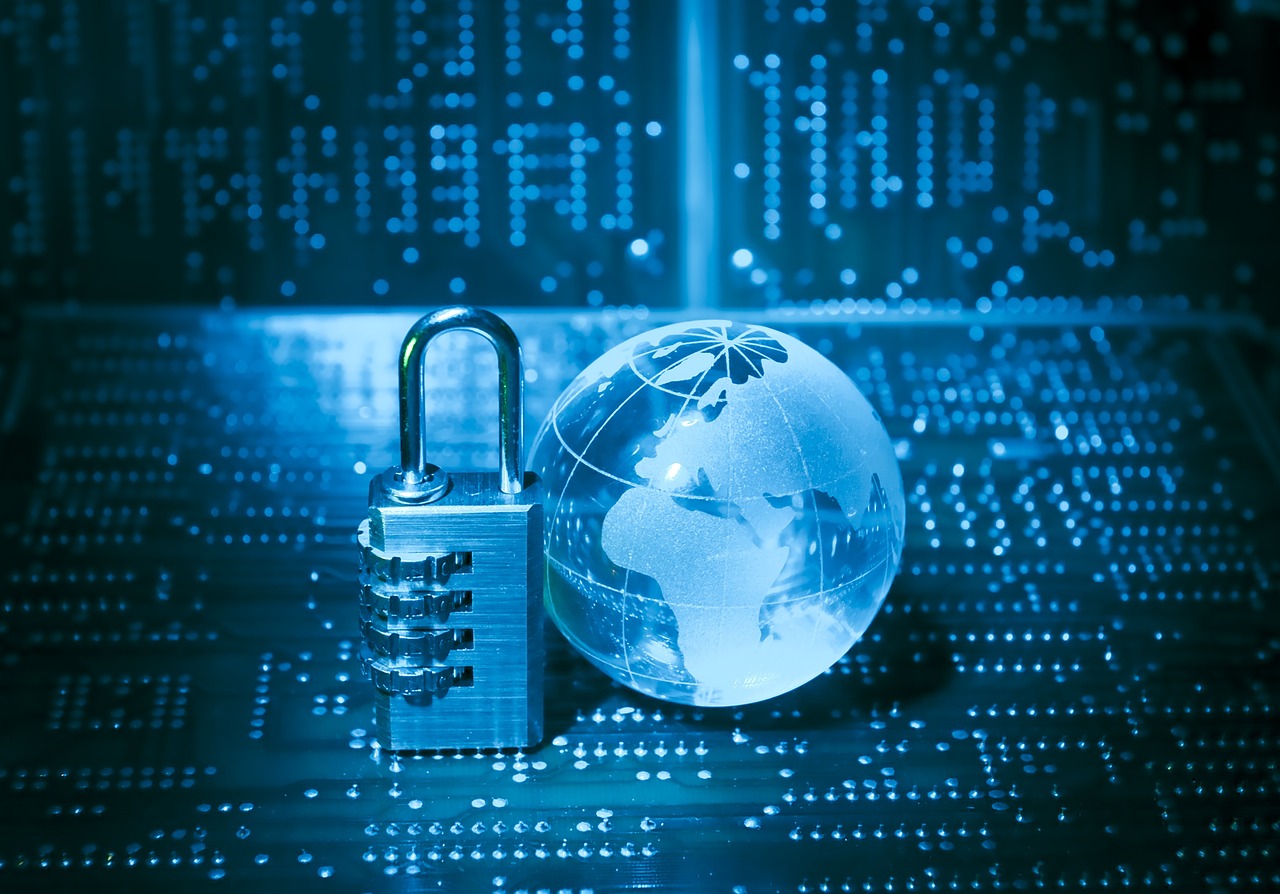
Outdoor Lighting
When it comes to safeguarding your home, plays a crucial role that often gets overlooked. Think about it: would a thief prefer to sneak around in the shadows or under the bright glow of a well-lit porch? The answer is clear. Properly placed and strategically designed lighting can act as a powerful deterrent against potential intruders. Not only does it enhance your home's security, but it also adds a welcoming ambiance to your property.
To maximize the effectiveness of your outdoor lighting, consider the following strategies:
- Illuminate Entry Points: Ensure that all entry points, including doors and windows, are well-lit. This includes your front door, back door, and any side entrances. Motion-activated lights can be particularly effective here, as they startle intruders and draw attention to their presence.
- Highlight Pathways: Lighting up pathways leading to your home not only guides guests safely but also reduces the risk of accidents. Additionally, well-lit pathways can discourage thieves from approaching your home.
- Use Layered Lighting: Combine different types of lighting—such as ambient, task, and accent lighting—to create a layered effect. This approach not only enhances security but also adds depth and beauty to your outdoor space.
Moreover, consider the types of outdoor lights you choose. LED lights are an excellent option due to their energy efficiency and long lifespan. Solar-powered lights are also a fantastic choice, especially for those looking to reduce energy costs while still maintaining visibility around their property. They charge during the day and automatically turn on at dusk, ensuring your home remains illuminated without added electricity costs.
Another vital aspect of outdoor lighting is the placement of fixtures. Install lights at strategic points such as:
| Location | Recommended Lighting Type |
|---|---|
| Front Door | Wall-mounted sconces or lanterns |
| Driveway | Path lights or bollard lights |
| Backyard | Floodlights or string lights |
| Garage | Motion sensor lights |
In addition to enhancing security, outdoor lighting can also improve your home’s curb appeal. Think of your home as a stage; the right lighting can highlight its best features and create an inviting atmosphere. As dusk falls, your home transforms into a beacon of safety and warmth, giving both you and your neighbors peace of mind.
So, as you embark on your home security journey, don’t underestimate the power of outdoor lighting. By illuminating your surroundings, you not only protect your property but also foster a sense of community safety. After all, a well-lit neighborhood is a less appealing target for criminals.
- How can I choose the right outdoor lighting for my home? Consider the areas that need illumination, the type of lighting (solar, LED, etc.), and your budget. It’s also wise to think about aesthetics—how the lights will complement your home’s design.
- Are motion sensor lights worth the investment? Absolutely! Motion sensor lights can save energy and provide an added layer of security by alerting you to movement in your vicinity.
- How often should I replace outdoor light bulbs? LED bulbs can last for several years, but it’s good practice to check them periodically. If you notice any flickering or dimming, it may be time for a replacement.

Creating a Neighborhood Watch
Establishing a Neighborhood Watch is one of the most effective ways to enhance security in your community. It’s not just about keeping an eye on each other; it’s about creating a supportive environment where everyone feels safe and connected. Imagine living in a neighborhood where everyone knows each other, and residents actively participate in watching over their homes. This sense of community can significantly deter criminal activities.
So, how do you start a Neighborhood Watch? First, gather interested neighbors. You can do this by knocking on doors or using social media platforms to reach out. Once you have a group, schedule a meeting to discuss your goals and establish a plan. It’s essential to involve as many people as possible to create a robust network of vigilance.
During your first meeting, consider discussing the following key points:
- Identifying specific concerns within the neighborhood.
- Establishing communication methods, such as group chats or a community bulletin board.
- Creating a schedule for regular neighborhood patrols.
- Organizing community events to foster relationships among neighbors.
Another crucial aspect of a successful Neighborhood Watch is establishing a clear line of communication with local law enforcement. Invite a police officer to your meeting to discuss how they can support your efforts. They can provide valuable insights into crime trends in your area and offer advice on how to report suspicious activities effectively. This partnership not only enhances your safety but also builds trust between residents and law enforcement.
Moreover, it’s important to remember that a Neighborhood Watch is not about taking the law into your own hands. Instead, it’s about being observant and reporting any unusual activities to the authorities. Encourage your neighbors to be proactive in their observations and to communicate openly about any concerns. Together, you can create a strong network of vigilance that makes it much harder for criminals to operate unnoticed.
Lastly, organizing community events can significantly strengthen the bonds within your neighborhood. Consider hosting barbecues, block parties, or even regular meetings to discuss safety tips and share experiences. These gatherings not only foster a sense of belonging but also encourage open dialogue about safety issues. The more connected your community is, the more likely residents will look out for each other.
In conclusion, creating a Neighborhood Watch is a proactive step towards enhancing the safety of your home and community. By fostering relationships, establishing communication with law enforcement, and encouraging vigilance among residents, you can create a safer environment for everyone. So, gather your neighbors and take the first step towards a more secure community!
Q: How do I initiate a Neighborhood Watch program?
A: Start by gathering interested neighbors and holding an initial meeting to discuss goals and establish a plan. Involve as many residents as possible to build a strong network.
Q: What should we discuss in our first meeting?
A: Focus on identifying neighborhood concerns, establishing communication methods, creating patrol schedules, and discussing community events to foster relationships.
Q: How can we communicate with local law enforcement?
A: Invite a police officer to your meeting to discuss how they can support your efforts. Establishing a relationship with law enforcement can enhance your Neighborhood Watch's effectiveness.
Q: Is a Neighborhood Watch program about policing the neighborhood?
A: No, it’s about being observant and reporting suspicious activities to the authorities. It’s crucial to foster a supportive environment rather than taking matters into your own hands.

Building Relationships with Neighbors
Building strong relationships with your neighbors is like creating a safety net around your home. It’s not just about knowing who lives next door; it’s about fostering a sense of community and trust that can significantly enhance your home security. When neighbors look out for one another, it creates a vigilant environment where suspicious activities are more likely to be reported. Imagine your neighborhood as a big family; when one member notices something off, the entire family rallies to support and protect each other.
One of the best ways to start building these relationships is through regular communication. A simple hello when you see each other outside can go a long way. You might want to consider organizing neighborhood gatherings or block parties. These informal settings provide an excellent opportunity for everyone to connect, share stories, and discuss mutual concerns. You could also establish a neighborhood group chat or social media page to keep everyone informed about local happenings. This way, you can quickly alert each other about anything unusual, from a suspicious person lurking around to a lost pet.
Moreover, participating in community events or volunteering together can strengthen these bonds. Whether it’s a local cleanup day or a charity event, working side by side builds camaraderie and trust. You can also form a neighborhood watch program, where residents agree to keep an eye out for each other. This proactive approach not only deters crime but also fosters a sense of belonging and responsibility among neighbors.
Remember, it’s essential to be approachable and willing to help. If you notice a neighbor struggling with something, offering assistance can go a long way in building rapport. When everyone feels valued and supported, the entire community benefits. In the end, it’s all about creating a safe haven where everyone feels secure and connected.
- How can I start building relationships with my neighbors?
Start with small gestures like greeting them when you see them outside. Consider organizing a neighborhood gathering or joining local community events to foster connections.
- What should I do if I notice suspicious activity in the neighborhood?
Report it to your neighbors and local authorities. Keeping everyone informed helps create a vigilant community.
- How can a neighborhood watch program benefit my community?
A neighborhood watch program encourages residents to look out for one another, which can deter crime and enhance overall safety.
- What are some activities I can do with my neighbors to strengthen relationships?
Consider organizing potlucks, game nights, or community service projects. These activities promote interaction and build trust.
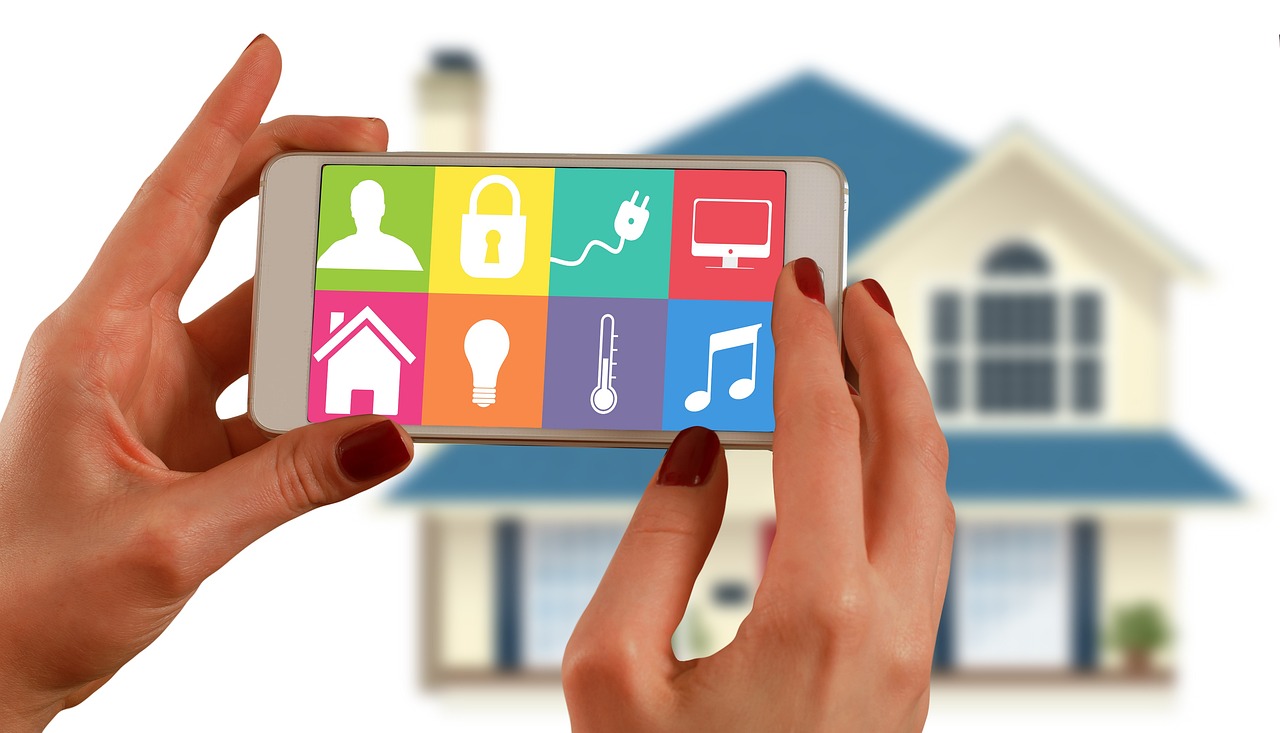
Reporting Suspicious Activities
When it comes to safeguarding your home and community, is one of the most proactive steps you can take. It's like being the eyes and ears of your neighborhood, helping to create an environment where crime has no place. But what exactly constitutes a suspicious activity? Well, it can be anything that seems out of the ordinary, such as someone loitering around your street, a car parked for too long without reason, or even unfamiliar individuals taking interest in your neighbor's home. The key is to trust your instincts. If something feels off, it probably is!
So, how do you go about reporting these activities? First and foremost, it’s essential to know your local law enforcement's non-emergency contact number. This way, you can quickly report any suspicious behavior without tying up emergency lines. When you do make that call, be prepared to provide as much detail as possible, including:
- Description of the person or vehicle: Note any distinguishing features, clothing, or license plate numbers.
- Location: Be specific about where the activity is happening.
- Time and date: Mention when you observed the suspicious behavior.
- Behavior details: Describe what you saw, including any actions that raised your concern.
Additionally, establishing a communication channel with your neighbors can significantly enhance your reporting efforts. Consider creating a neighborhood group chat or a social media page where everyone can share alerts about suspicious activities. This not only keeps everyone informed but also fosters a sense of community vigilance. Remember, the more eyes on the street, the better protected you all are.
Finally, while it’s critical to report suspicious activities, it's equally important to avoid jumping to conclusions. Misunderstandings can lead to unnecessary panic or conflict. Always approach situations with a level head, and encourage your neighbors to do the same. By working together and staying alert, you can create a safer environment for everyone.
- What should I do if I see something suspicious?
Contact your local law enforcement's non-emergency number. Provide them with as much detail as you can.
- Can I report suspicious activity anonymously?
Many police departments allow anonymous tips. Check with your local department for their specific policies.
- What if I mistakenly report something that isn’t suspicious?
It's better to report and be wrong than to ignore a potential threat. Authorities appreciate the vigilance of community members.

Insurance and Legal Considerations
When it comes to defending your home against theft, understanding insurance and legal considerations is just as crucial as installing the latest security systems. Homeowners often overlook these aspects, thinking that a robust security setup is all they need. However, having the right insurance can be your safety net when the unexpected happens. Imagine this: after a break-in, you discover that your prized possessions are gone. Without adequate insurance, you might be left high and dry, scrambling to cover the losses out of pocket. That's why it's essential to grasp how home insurance works and what it covers.
Homeowners insurance typically includes coverage for theft, but the extent of that coverage can vary significantly. For instance, standard policies may cover personal property losses, but high-value items like jewelry or art might require additional riders. It's important to review your policy closely and ensure that you have sufficient coverage for your belongings. Don't wait until it's too late! Take the time to document your valuables with photos and receipts, which can make filing a claim much smoother.
Legal considerations also play a vital role in protecting your home. Homeowners have specific legal rights when it comes to property protection. For example, self-defense laws can vary from state to state. It's essential to understand what actions you are legally permitted to take in the event of a break-in. Some homeowners may feel justified in taking matters into their own hands, but this could lead to serious legal repercussions if not done within the bounds of the law. Knowing your rights can help you navigate these situations more effectively.
Moreover, it's not just about knowing your rights; it's also about understanding your responsibilities as a homeowner. You have a duty to maintain a secure environment for your family and neighbors. If a break-in occurs due to negligence—like failing to repair broken locks or not having adequate lighting—you could potentially face legal consequences. Therefore, regularly assessing your home’s security and making necessary improvements is not just a good practice; it’s a legal obligation.
To summarize, here are some key points to consider regarding insurance and legal aspects:
- Review Your Homeowners Insurance: Understand what is covered and consider additional riders for high-value items.
- Document Your Valuables: Keep an inventory with photos and receipts to streamline the claims process.
- Know Your Legal Rights: Familiarize yourself with self-defense laws in your state to ensure you act within legal limits.
- Maintain Security: Regularly assess your home’s security measures to fulfill your responsibilities as a homeowner.
By keeping these considerations in mind, you can bolster your home’s defenses against theft while also ensuring that you are legally protected. Remember, a proactive approach to both insurance and legal responsibilities can save you a lot of headaches down the road!
1. What should I look for in a homeowners insurance policy regarding theft coverage?
Look for policies that offer comprehensive personal property coverage, including high-value items. Make sure to ask about any exclusions and consider adding riders for items that exceed standard limits.
2. How can I ensure my home is legally secure?
Stay informed about local laws regarding self-defense and property protection. Regularly review your security measures to ensure they meet legal standards and protect your rights as a homeowner.
3. What are the consequences of not having adequate insurance?
If you lack sufficient insurance coverage, you risk bearing the full financial burden of theft losses. This could lead to significant out-of-pocket expenses that could have been avoided with proper coverage.

Homeowners Insurance
Homeowners insurance is not just a safety net; it's a crucial part of your home's security strategy. Imagine coming home after a long day to find that your belongings have been taken, or worse, your home has been damaged. This is where homeowners insurance steps in, offering financial protection against theft, vandalism, and even natural disasters. It's like having a guardian angel watching over your property, ensuring that you won't have to bear the full brunt of unexpected losses.
When selecting a homeowners insurance policy, it’s essential to consider what it typically covers. Most policies provide protection for the structure of your home, personal belongings, and liability in case someone gets injured on your property. However, not all policies are created equal. They can vary significantly in terms of coverage limits and exclusions, which is why understanding the fine print is vital. For instance, some policies might not cover specific types of damage, such as flood or earthquake damage, unless you purchase additional coverage.
To help you navigate the world of homeowners insurance, here are some key components you should look for:
- Dwelling Coverage: This covers the physical structure of your home, including the roof, walls, and built-in appliances.
- Personal Property Coverage: This protects your belongings, such as furniture, electronics, and clothing, from theft or damage.
- Liability Protection: This provides coverage if someone is injured on your property and decides to sue.
- Additional Living Expenses: If your home becomes uninhabitable due to a covered loss, this can help pay for temporary housing.
It's also crucial to assess the amount of coverage you need. A common mistake homeowners make is underinsuring their property. You should regularly evaluate your possessions and the value of your home, especially after making significant purchases or renovations. Keeping an updated inventory of your belongings can also facilitate the claims process if you ever need to file one.
Another important aspect to consider is the deductible—the amount you need to pay out of pocket before your insurance kicks in. A higher deductible usually means lower premiums, but it’s essential to choose a deductible that you can comfortably afford in case of an emergency. Balancing these factors can be tricky, but it’s worth taking the time to find the right policy that fits your budget and needs.
In summary, homeowners insurance is an indispensable tool in your home security arsenal. By understanding its components, assessing your coverage needs, and keeping your policy updated, you can ensure that your home and belongings are well-protected against theft and other unforeseen events. Remember, being proactive today can save you from significant financial stress tomorrow.
Here are some common questions homeowners have regarding homeowners insurance:
- What factors affect my homeowners insurance premium? Factors include the location of your home, its age, the materials used in construction, and your claims history.
- Can I get coverage for specific valuables? Yes, you can often purchase additional coverage for high-value items like jewelry, art, or collectibles.
- How do I file a claim? To file a claim, contact your insurance provider as soon as possible and provide them with all necessary documentation and evidence of the loss.
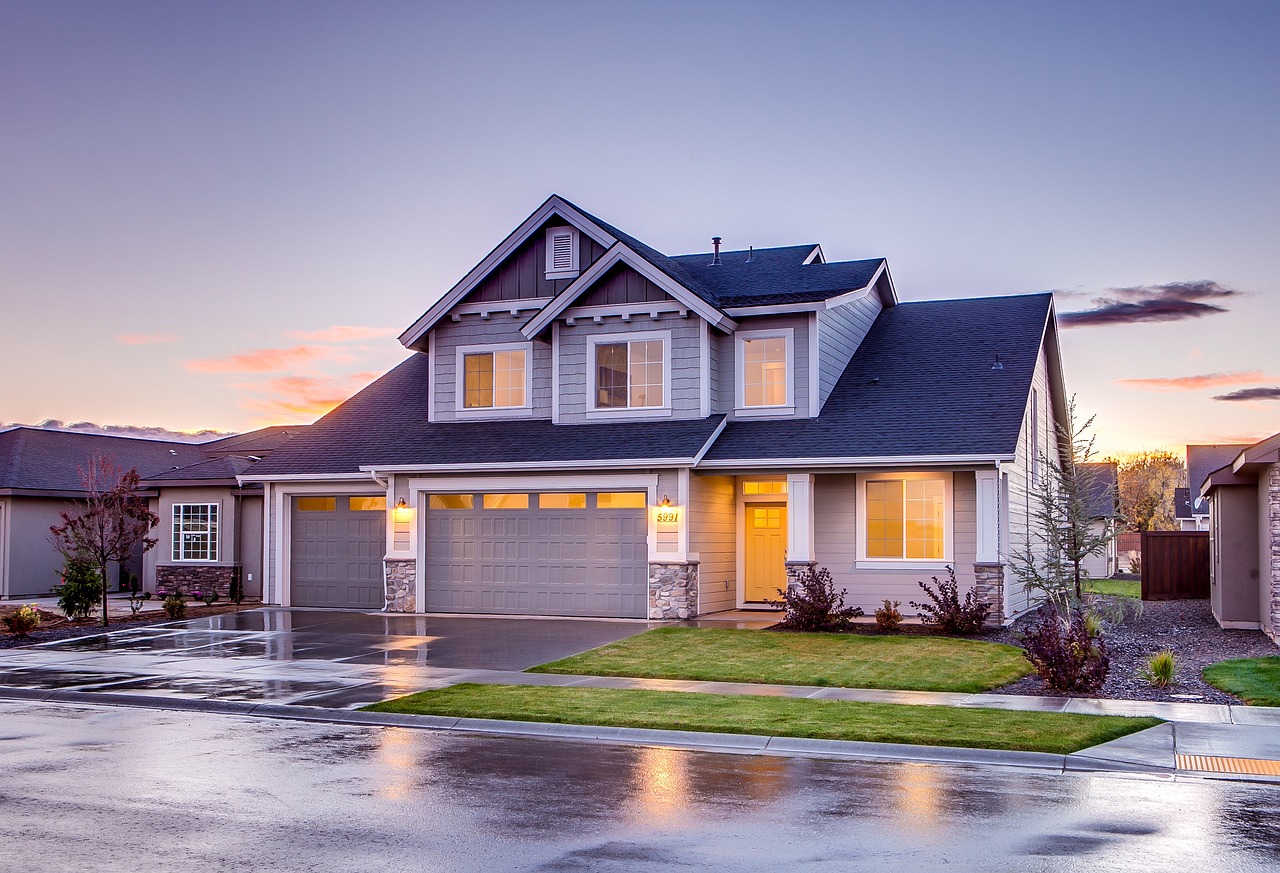
Legal Rights and Responsibilities
Understanding your legal rights and responsibilities as a homeowner is crucial for protecting your property and ensuring your family's safety. In many jurisdictions, homeowners have the right to defend their property against intruders, but the extent of this right can vary significantly. For instance, some states have "stand your ground" laws, allowing homeowners to use force without a duty to retreat, while others require a reasonable belief of imminent danger before any defensive action is taken. It’s essential to familiarize yourself with the specific laws in your area to know how to act appropriately in a threatening situation.
Moreover, homeowners also have responsibilities when it comes to maintaining a safe environment. This includes ensuring that your property does not pose a risk to others, such as keeping walkways clear of debris or hazards. Failing to do so could lead to liability issues if someone is injured on your property. Additionally, if you have a security system installed, you must ensure that it complies with local regulations and does not infringe on the privacy rights of others.
When it comes to self-defense, the laws can be complex. Homeowners should be aware of the following key points regarding their rights and responsibilities:
- Self-defense laws: Understand the laws regarding the use of force in your state.
- Duty to retreat: Know if you are required to retreat before using force.
- Liability for property injuries: Maintain your property to avoid potential injury claims.
In the unfortunate event of a break-in, having the right homeowners insurance policy can also provide a safety net. This insurance typically covers theft and damages incurred during a burglary, but it’s essential to review your policy carefully to understand what is included. Some policies may have specific exclusions or limitations regarding personal property, so make sure to document your belongings and keep an updated inventory. This documentation can ease the claims process and ensure you receive the compensation you deserve.
Lastly, it’s wise to consult with a legal professional who specializes in property law to clarify any doubts you may have. They can provide guidance tailored to your situation, helping you navigate the complexities of legal rights and responsibilities as a homeowner. This proactive approach not only enhances your understanding but also empowers you to take effective action when it comes to defending your home.
Q1: What should I do if an intruder breaks into my home?
A1: If an intruder breaks into your home, prioritize your safety. If possible, escape and call the police. If you cannot escape, be prepared to defend yourself, but remember to act within the confines of the law regarding self-defense.
Q2: Am I liable if someone gets injured on my property?
A2: Yes, as a homeowner, you could be held liable if someone is injured on your property due to negligence, such as failing to maintain safe conditions. It's essential to keep your property safe and well-maintained.
Q3: How can I ensure my homeowners insurance covers theft?
A3: Review your homeowners insurance policy thoroughly to understand what is covered. Document your belongings and consider additional riders for high-value items to ensure you have adequate coverage in the event of theft.

Emergency Preparedness
When it comes to defending your home against theft, being prepared for emergencies is not just a good idea—it's essential. Imagine waking up in the middle of the night to the sound of shattering glass. What would you do? Having a solid emergency plan in place can mean the difference between chaos and control. It's all about being proactive rather than reactive. The first step is to create an emergency plan that outlines what actions you and your family should take if a theft or break-in occurs. This plan should include designated safe spots in your home, emergency contact numbers, and a clear strategy for communicating with each other during a crisis.
In addition to an emergency plan, it's crucial to have essential supplies ready at a moment's notice. Think of it as your home security toolkit. What would you need to feel safe and secure? Here are some items every household should consider having:
- First Aid Kit: For any minor injuries that may occur during a stressful situation.
- Flashlights: To navigate through dark areas if the power goes out.
- Whistle: To signal for help if needed.
- Portable Phone Charger: To ensure your phone remains charged for emergency calls.
- Emergency Contact List: A physical copy of important phone numbers, including local authorities.
Being prepared also means regularly reviewing and practicing your emergency plan. Just like fire drills at school, conducting a home security drill can help everyone know their roles and what to do in case of an emergency. Consider scheduling these drills at least once a year to keep the plan fresh in everyone's mind. This not only builds confidence but also reinforces the importance of security within your household.
Finally, remember that preparation extends beyond your home. It's essential to stay informed about local crime trends and community safety initiatives. Engage with your neighbors and share your emergency plans; after all, safety is a community effort. By fostering a culture of preparedness, you not only enhance your own security but also contribute to a safer neighborhood overall.
Q: What should I do first if I experience a break-in?
A: Your safety is the priority. If you are inside and suspect a break-in, find a safe place to hide, call 911, and do not confront the intruder.
Q: How often should I update my emergency plan?
A: It's advisable to review and update your emergency plan at least once a year or whenever there are significant changes in your household, such as new family members or changes in routine.
Q: Are there specific supplies I should always keep on hand for emergencies?
A: Yes, essential items include a first aid kit, flashlights, portable chargers, and an emergency contact list. Tailor your supplies based on your family's specific needs.
Q: How can I ensure my family remembers the emergency plan?
A: Regular practice and discussions about the plan can help. Consider incorporating it into family meetings or fun drills to keep everyone engaged.

Creating an Emergency Plan
When it comes to protecting your home and loved ones, having a well-thought-out emergency plan is absolutely essential. Think of it as your family's safety blueprint, outlining the steps to take during a theft or break-in. Not only does this plan provide peace of mind, but it also ensures that everyone knows what to do when the unexpected happens. So, how do you create an effective emergency plan? Let’s break it down!
First and foremost, gather your family for a discussion. This is a chance to talk openly about the potential risks your home may face and what to do in case of an emergency. During this meeting, you can assign roles to each family member, ensuring everyone knows their responsibilities. For instance, one person might be in charge of calling 911, while another checks on younger children or pets. By having clearly defined roles, you can minimize confusion during a stressful situation.
Next, you should establish a safe meeting point. This is a location outside your home where everyone can regroup if you need to evacuate. It could be a neighbor's house, a nearby park, or any place that is safe and easily accessible. Make sure all family members are aware of this location and can get there quickly. Having a designated meeting spot can help you account for everyone without wasting precious time.
Additionally, it's crucial to create a communication plan. In today's world, we rely heavily on our phones, but what if they run out of battery or the network is down? Consider alternative methods of communication, such as using a landline or having a designated friend or relative outside the area who can relay messages. This way, if you get separated, you can still check in with each other.
Lastly, practice makes perfect! Conduct regular drills to ensure everyone knows their roles and the steps to take during an emergency. These drills can help reduce panic and confusion, allowing your family to react quickly and efficiently. You might even want to role-play different scenarios, such as what to do if someone breaks in while you are home or how to escape if you need to leave quickly.
In summary, creating an emergency plan involves:
- Gathering your family to discuss potential risks and assign roles.
- Establishing a safe meeting point outside your home.
- Creating a communication plan to stay connected.
- Practicing your plan through regular drills.
By taking these steps, you'll not only enhance your family's safety but also foster a sense of security that allows everyone to feel more at ease in their own home. Remember, preparation is key, and a little planning can go a long way in ensuring your family's safety during emergencies.
Q: What should I include in my emergency plan?
A: Your emergency plan should include roles for each family member, a safe meeting point, a communication strategy, and details on how to respond to various emergency scenarios.
Q: How often should we practice our emergency plan?
A: It's recommended to conduct drills at least twice a year to keep everyone familiar with their roles and the steps to take during an emergency.
Q: What if my family members are not at home during an emergency?
A: Ensure that everyone knows the communication plan and the designated meeting point so they can check in with you or regroup as soon as it's safe.
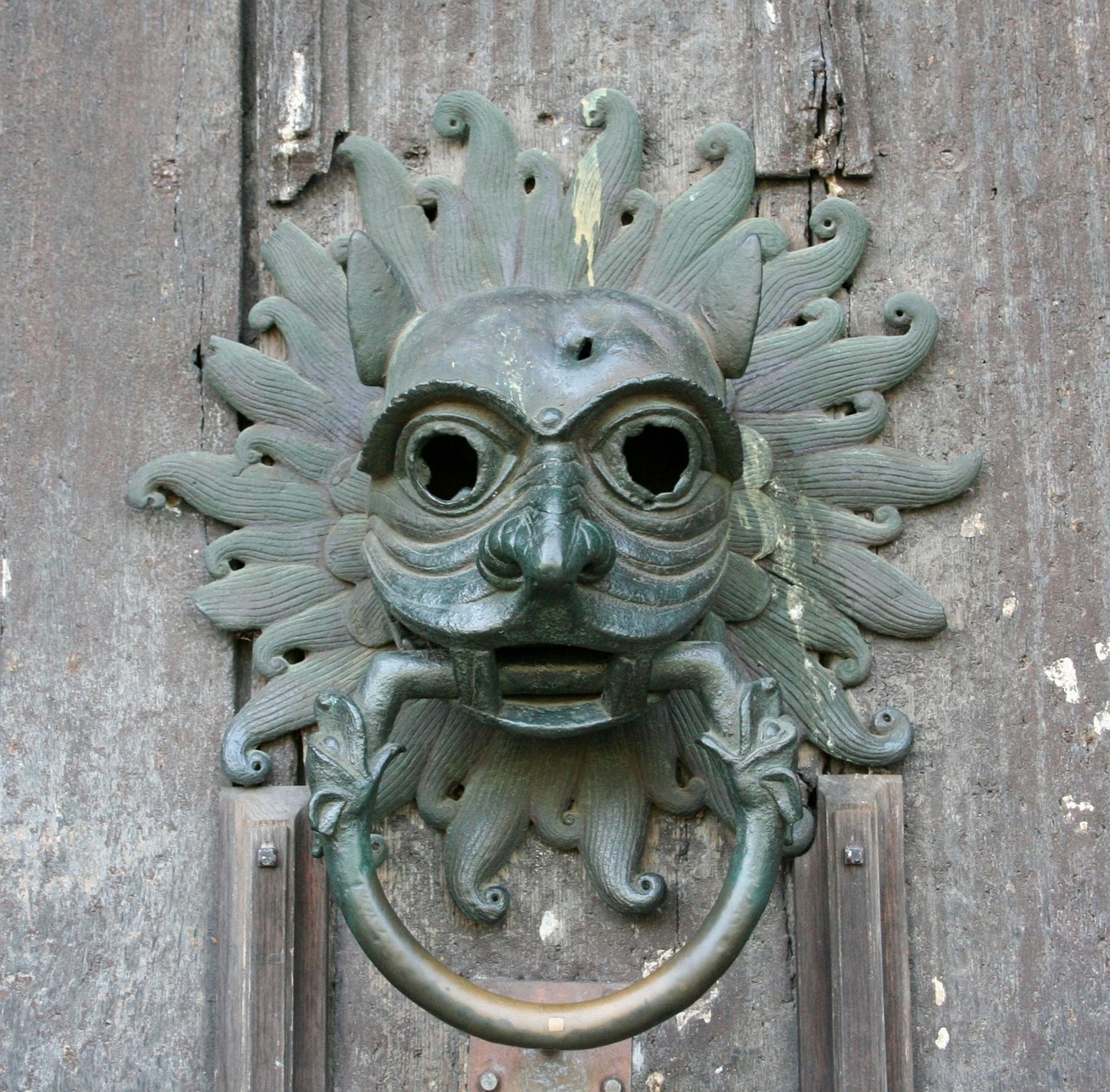
Essential Emergency Supplies
When it comes to safeguarding your home, being prepared for emergencies is just as critical as preventing theft in the first place. Imagine you're in the middle of a crisis—whether it's a break-in, a natural disaster, or another unexpected event. Having the right supplies on hand can make all the difference. It's like having a safety net that catches you when you fall. So, what should you have in your emergency supply kit? Here’s a rundown of essentials that every household should consider.
First and foremost, you should have a well-stocked first aid kit. This kit acts as your first line of defense in case of injuries. It should contain items such as band-aids, antiseptic wipes, gauze, adhesive tape, and pain relievers. You never know when a minor injury could escalate, and being prepared can save precious time in critical situations.
Next, consider having a reliable flashlight and extra batteries. During emergencies, power outages are common, and having a light source can help you navigate your home safely. Think of it as your guiding light in the darkness, illuminating your path and keeping you safe from potential hazards.
Additionally, it's crucial to have non-perishable food and water supplies. Experts recommend keeping at least a three-day supply of food and water for each family member. Items like canned goods, granola bars, and bottled water can sustain you during a crisis when access to food may be limited. Remember, hydration is key—without water, your body can only last a few days!
Don't forget about communication tools. A battery-powered or hand-crank radio can keep you informed about emergencies and weather updates, especially when there's no electricity. It's like having a lifeline to the outside world, ensuring you stay in the loop when everything else seems chaotic.
Lastly, consider creating a document containing important information such as emergency contacts, medical records, and insurance details. This document should be easily accessible and stored in a waterproof container. Think of it as your emergency blueprint, guiding you through the steps you need to take when every second counts.
In summary, preparing for emergencies is not just about having supplies; it's about creating a safety plan that can help you and your family navigate unexpected situations. By gathering these essential supplies, you're not only protecting your home but also ensuring that you have the tools needed to respond effectively when it matters most. Remember, a little preparation goes a long way in fostering peace of mind.
- What should I include in my emergency supply kit?
Your kit should include a first aid kit, flashlight with extra batteries, non-perishable food, bottled water, a battery-powered radio, and important documents.
- How often should I check my emergency supplies?
It's advisable to check your emergency supplies at least twice a year to ensure everything is up to date and functional.
- Can I use regular household items as emergency supplies?
Yes! Many household items can serve emergency purposes, such as duct tape for repairs or blankets for warmth.
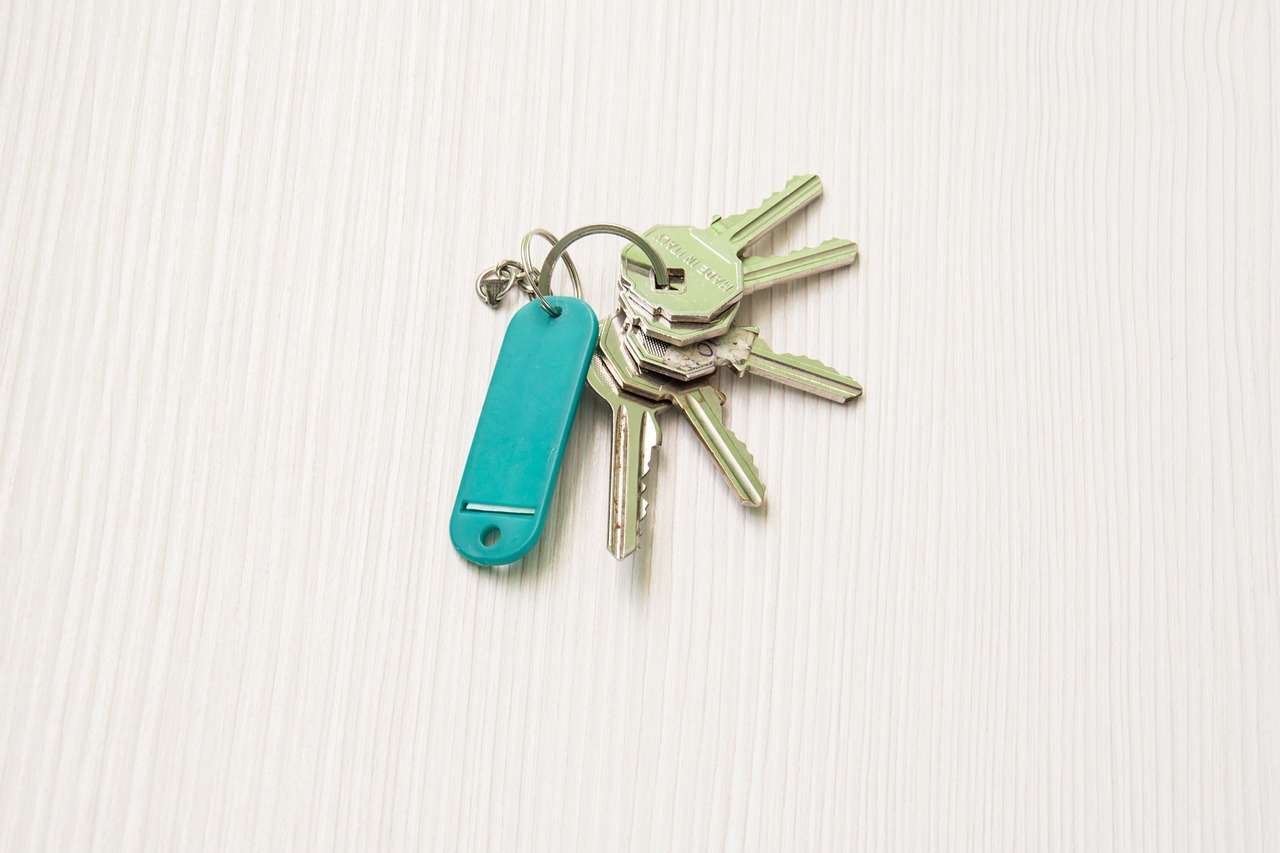
Regular Security Audits
Conducting is an essential practice for any homeowner serious about safeguarding their property. Think of it as a routine health check-up, but for your home. Just as you wouldn’t ignore a persistent cough, you shouldn’t overlook potential vulnerabilities in your home’s security. Regular audits help you identify weak points that could be exploited by intruders, ensuring that your home remains a fortress against theft.
To perform an effective security audit, start by evaluating all entry points to your home. This includes doors, windows, garages, and even less obvious access points like basement windows or pet doors. Are your locks strong enough? Are there any windows that can be easily opened from the outside? It’s crucial to take a comprehensive look at these areas. For instance, consider the following:
- Are all doors fitted with high-quality deadbolts?
- Do your windows have secure locks?
- Is your garage door equipped with a reliable locking mechanism?
Next, don’t forget about the outdoor environment. Landscaping can play a significant role in home security. Tall bushes or trees can provide cover for potential burglars. Trim back any overgrown vegetation that might obscure the view of your home from the street. Also, assess your outdoor lighting. Are there dark areas around your property where intruders could hide? Installing motion-sensor lights can greatly enhance your home’s visibility and deter unwanted visitors.
Once you’ve completed your assessment, it’s time to update your security measures. Security technology is constantly evolving, and what was once considered state-of-the-art may now be outdated. For example, if you installed a security system five years ago, it might be worth investigating newer options that offer better features like remote monitoring or smart home integration. Regularly updating your security systems ensures that you stay one step ahead of potential threats.
Finally, make security audits a part of your routine. Set a reminder every six months to review your home’s security. This way, you can stay proactive rather than reactive. By consistently auditing your security measures, you’ll foster a greater sense of safety for you and your family, ensuring your home remains a sanctuary.
Q: How often should I conduct a security audit?
A: It’s recommended to perform a security audit at least twice a year. However, if you experience any suspicious activities or changes in your neighborhood, consider doing it more frequently.
Q: What should I do if I find vulnerabilities during my audit?
A: If you identify any weaknesses, prioritize addressing them immediately. This could involve upgrading locks, installing better lighting, or even consulting a security professional for advice.
Q: Can I do a security audit myself, or should I hire a professional?
A: While many homeowners can effectively perform their own audits, hiring a professional can provide additional insights and recommendations tailored to your specific situation.
Q: What are some common security flaws homeowners overlook?
A: Commonly overlooked flaws include inadequate outdoor lighting, weak locks on windows and doors, and unmonitored garage entry points. Regular audits can help highlight these issues.

Assessing Entry Points
When it comes to home security, one of the most critical aspects is assessing the entry points of your home. Think of your home as a fortress; if the gates are weak, the castle is vulnerable. Every door, window, and even the garage door serves as a potential entry point for intruders. Therefore, it’s essential to take a thorough inventory of these access areas and evaluate their security. Start by examining your doors; are they solid wood or metal? Do they have high-quality locks? A flimsy door or a cheap lock is like an open invitation for a burglar.
Next, let’s talk about windows. Many homeowners underestimate the importance of window security. Windows are often the easiest targets for thieves, especially if they are left unlocked or have outdated locks. Consider installing window locks or even security bars, especially on ground-level windows. Additionally, assess the visibility of your windows from the street. If they are hidden by shrubs or fences, it might provide cover for a burglar, making it easier for them to break in unnoticed.
Don’t forget about your garage! Many people leave garage doors unlocked or use simple, easy-to-pick locks. Ensure that your garage door has a robust locking mechanism and consider adding a secondary lock for extra security. Additionally, if your garage connects to your home, it’s crucial to secure this entry point as well.
Here’s a quick checklist to help you assess your entry points:
- Check the quality of all door locks.
- Inspect windows for weak locks or vulnerabilities.
- Evaluate garage door security.
- Consider the visibility of entry points from the street.
- Look for any potential hiding spots near doors and windows.
By conducting a thorough assessment of your home’s entry points, you can identify vulnerabilities and take proactive measures to enhance your security. Remember, it’s not just about having the right locks and alarms; it’s about creating a comprehensive defense strategy that starts with understanding where your home is most vulnerable.
Q: What are the most common entry points for burglars?
A: The most common entry points include front and back doors, ground-level windows, and garage doors. Always ensure these areas are secured properly.
Q: How can I make my windows more secure?
A: You can install window locks, security bars, or even use window film that reinforces glass. Additionally, keep windows locked when not in use.
Q: Are smart locks worth the investment?
A: Yes, smart locks offer enhanced security features such as remote access, alerts, and integration with home security systems, making them a worthwhile investment.
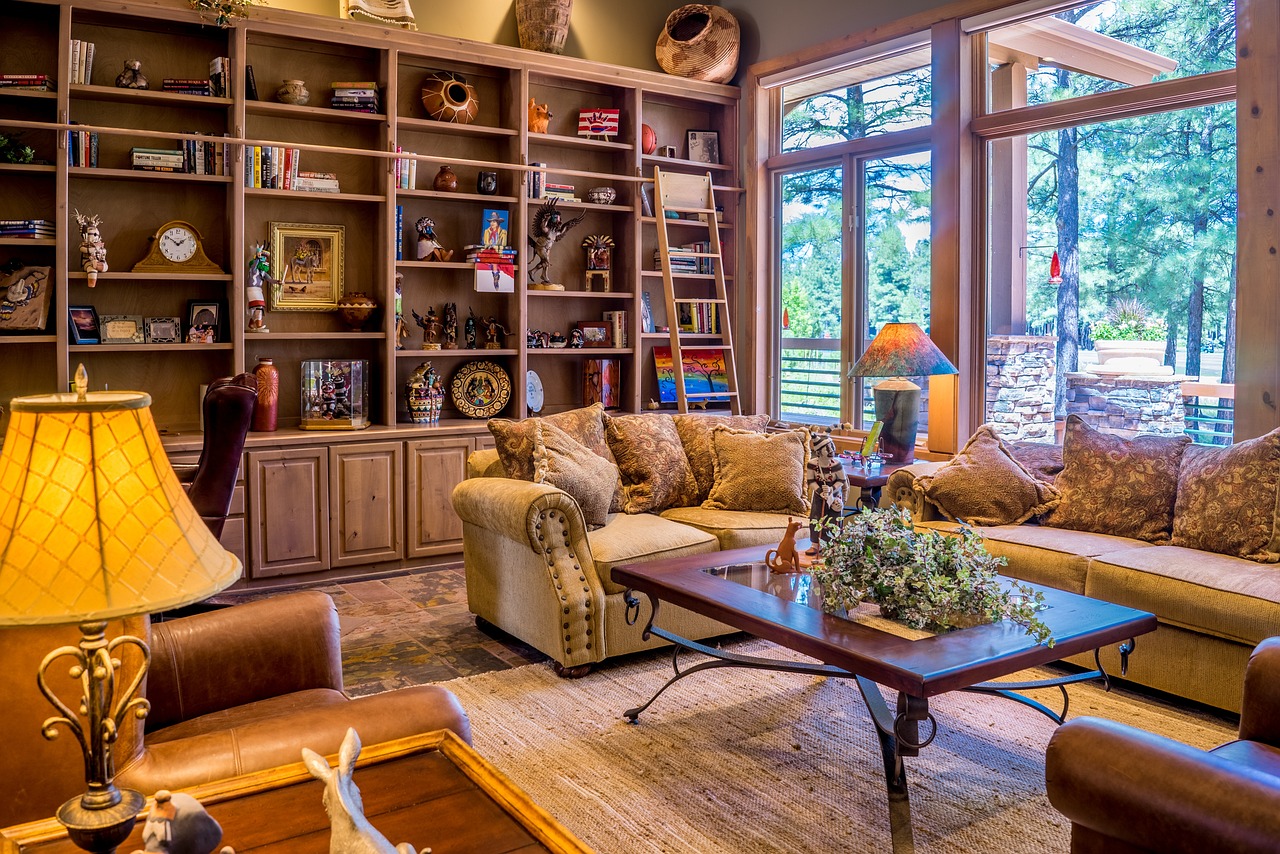
Updating Security Measures
In the ever-evolving landscape of home security, staying ahead of potential threats is paramount. Just as technology advances, so do the tactics employed by those with less-than-honorable intentions. Therefore, it’s crucial to regularly update your security measures to ensure your home remains a fortress against theft. Think of it like maintaining a car; if you ignore regular check-ups, you might find yourself stranded on the side of the road. Similarly, neglecting your home security can leave you vulnerable to intruders.
One of the first steps in this ongoing process is to conduct a thorough assessment of your current security systems. Are your locks still functioning properly? Do your surveillance cameras offer clear images, even at night? By regularly evaluating your security components, you can identify any weaknesses that may have developed over time. It’s not just about replacing outdated technology; it’s about ensuring that every element of your security system works in harmony to protect your home.
Moreover, consider the integration of smart home technology into your security strategy. These devices not only enhance your home’s security but also offer convenience. For instance, smart locks can be controlled remotely, allowing you to grant access to trusted visitors even when you’re not home. Similarly, smart cameras can send real-time alerts to your smartphone, enabling you to monitor your property from anywhere in the world. In a sense, these devices act as your personal security guards, always on duty and ready to alert you to any unusual activity.
Additionally, it’s essential to stay informed about the latest security trends and technologies. Join local community groups or online forums where homeowners share their experiences and recommendations. By staying connected, you can learn about new security products and techniques that others have successfully implemented. It’s like being part of a neighborhood watch, but on a broader scale, where everyone benefits from shared knowledge.
Lastly, remember that updating your security measures isn’t a one-time task; it’s an ongoing commitment. Set a schedule to review your systems at least twice a year, and make adjustments as needed. This proactive approach not only enhances your home’s safety but also provides peace of mind for you and your family. After all, a secure home is a happy home, and who wouldn’t want that?
- How often should I update my home security measures? It’s recommended to review your security systems at least twice a year, or more frequently if you notice any changes in your neighborhood or lifestyle.
- What are some signs that my security system needs an upgrade? If your locks are old and worn, your cameras are outdated, or you’re not receiving alerts from your system, it may be time for an upgrade.
- Are smart home devices worth the investment? Yes, smart home devices can enhance your security significantly and offer added convenience, making them a worthwhile investment.
- How can I stay informed about new security technologies? Join local community groups, subscribe to home security blogs, and follow industry news to stay updated on the latest trends and products.
Frequently Asked Questions
- What are the most common burglary tactics?
Burglars often use tactics like casing a neighborhood, looking for easy entry points, and exploiting poor lighting. They may also pose as delivery personnel or maintenance workers to gain trust. Being aware of these tactics can help you better prepare your home against potential threats.
- How do I choose the right home security system?
When selecting a home security system, consider factors like the size of your home, your budget, and the specific features you need. Look for systems that offer 24/7 monitoring, mobile alerts, and integration with smart home devices for added convenience and security.
- What is the difference between monitored and unmonitored alarm systems?
Monitored alarm systems are connected to a security company that alerts authorities in case of a break-in, while unmonitored systems only notify you. Monitored systems provide a higher level of security but typically come with a monthly fee.
- How can outdoor lighting help prevent theft?
Outdoor lighting eliminates dark areas around your home, making it harder for burglars to hide. Motion-sensor lights are particularly effective as they turn on when movement is detected, startling intruders and drawing attention to suspicious activity.
- What should I include in my emergency plan?
Your emergency plan should outline steps to take during a theft, including who to contact, where to meet, and how to secure your home. Make sure every family member knows the plan and practices it regularly to ensure everyone is prepared.
- How often should I conduct a security audit?
It's a good idea to perform a security audit at least once a year, or whenever you make significant changes to your home. Regular audits help identify vulnerabilities and ensure your security measures are up to date with current threats.
- What items should I have in my emergency supply kit?
Your emergency supply kit should include essentials like water, non-perishable food, a flashlight, batteries, a first aid kit, and important documents. Having these items ready can make a significant difference during emergencies.
- How can I build relationships with my neighbors for better security?
Start by introducing yourself and engaging in conversations with your neighbors. Organize community events or meetings to discuss safety concerns and establish a neighborhood watch program. Strong relationships foster a sense of community and enhance overall security.



















